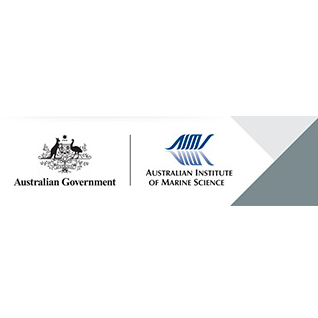Full description
In this study, aspects of the physical oceanography, groundwater and pore-water chemistry, and the geochemical and microbiological compositions of sediments have been investigated in the Bonaparte Basin. In particular, we have studied the outer shelf margins of the Timor Sea, in and around the Cartier Trough and Karmt Shoals, looking for evidence of hydrocarbon and groundwater vents associated with the giant Halimeda mounds. Previous work in this region had identified an apparently strong relationship between the location of hydrocarbon seeps and carbonate bank development. A few sites on the seaward margin of Pee and Karmt shoals were identified where surface sediment pore water was greatly enhanced in activities of 224Ra, 223Ra, 228Ra, and 226Ra, which should be an indicator of groundwater inputs. Some of these sediments also had above background concentrations of ultraviolet fluorescence (UVF) detected hydrocarbons. No convincing evidence of seeps from water column salinity, temperature, optical backscatter or oxygen profiles were found, but the radium isotope activity ratios were useful in suggesting that the water sources for this region were likely from the South China Sea via the Indonesian Throughflow (ITF).Geochemical analyses of bulk sediment grab samples of this region showed the expected aragonite (high Sr) dominance on the Halimeda mounds. We also found a zone of Al and Fe enhancement in the dominantly carbonate (Halimeda, foram, pteropod ooze) sediments seaward of the mounds. One radio-chemically dated core from these sediments indicated significant variations in marine and terrestrial (aeolian?) inputs over several centuries of deposition. A consortium of researchers is now being assembled to specifically locate the hydrocarbon and groundwater vents, and determine the influence of these energy and nutrient inputs on the unique biological diversity of these spectacular 400 m high mounds.The scientific objectives of this research was to:1. Search for hydrocarbon/groundwater seeps near Halimeda mounds in the Pee Shoals to Karmt Shoals region, shelf and slope using on-board chemical and radiochemical tracers and to test new methane and oxygen sensors on the CTD frame. 2. Devise methods to estimate carbon (organic and carbonate) burial rates, as a carbon sink or source, and obtain samples of Halimeda for biomass and identification by testing existing sediment sampling gear for use on and around the mounds.3. Preserve samples for nutrient, trace metal, hydrocarbon, radionuclide and microbiological studies to characterise potential study sites.4. Synthesize these preliminary results and develop plans for longer term, integrated and multi-institutional studies of these seep ecosystems.
Lineage
Maintenance and Update Frequency: notPlannedNotes
CreditBurns, Kathryn A, Dr (Principal Investigator)
Brunskill GJ (AIMS)
Zagorskis IE (AIMS)
Hoj L (AIMS)
Modified: 15 09 2025
text: westlimit=124.0; southlimit=-11.0; eastlimit=128.0; northlimit=-10.0
Fluxes and fate of petroleum hydrocarbons in the Timor Sea ecosystem with special reference to active natural hydrocarbon seepage: Burns KA, Brinkman DL, Brunskill GJ, Logan GA, Volk H, Wasmund K and Zagorskis IE (2010) Fluxes and fate of petroleum hydrocarbons in the Timor Sea ecosystem with special reference to active natural hydrocarbon seepage. Marine Chemistry 118: 140-155.
local : articleId=8428
Supplementary Content for the article: Burns KA, Brinkman DL, Brunskill GJ, Logan GA, Volk H, Wasmund K and Zagorskis IE (2010) Fluxes and fate of petroleum hydrocarbons in the Timor Sea ecosystem with special reference to active natural hydrocarbon seepage. Marine Chemistry 118: 140-155.
doi :
https://dx.doi.org/10.1016/j.marchem.2009.11.010![]()
Pilot study of hydrocarbon fluxes around Halimeda mounds on the Sahul Shelf and in the Timor Sea: Burns KA, Brunskill GJ, Zagorskis IE and Hoj L (2003) Pilot study of hydrocarbon fluxes around Halimeda mounds on the Sahul Shelf and in the Timor Sea. Australian Institute of Marine Science. 66 p.
local : articleId=7907
Timor Sea Oil Seeps Survey - Hydrocarbons Data for Sediment Cores [PDF, 860 KB]
uri :
https://api.aims.gov.au/data-v2.0/5fcaf480-60d1-11dc-9ca3-00008a07204e/files/tsoss-hydrocarbons.pdf![]()
Timor Sea Oil Seeps Survey - Sediment Core Inorganic Geochemisty Trends - Trace Elements in Cores 3750, 3743 and 3698 [PDF, 316 KB]
Timor Sea Oil Seeps Survey - Lipids in Surface Microlayers and Sediment Trap Samples data [PDF, 88 KB]
SS 06/2005 Voyage details and related metadata, reports, events and data.
uri :
http://www.marine.csiro.au/data/trawler/survey_details.cfm?survey=SS200506![]()
Timor Sea Oil Seeps Survey - Sediment Core Inorganic Geochemistry Trends - Trace Elements in Cores 3683, 3704 [PDF, 376 KB]
- global : 5fcaf480-60d1-11dc-9ca3-00008a07204e


